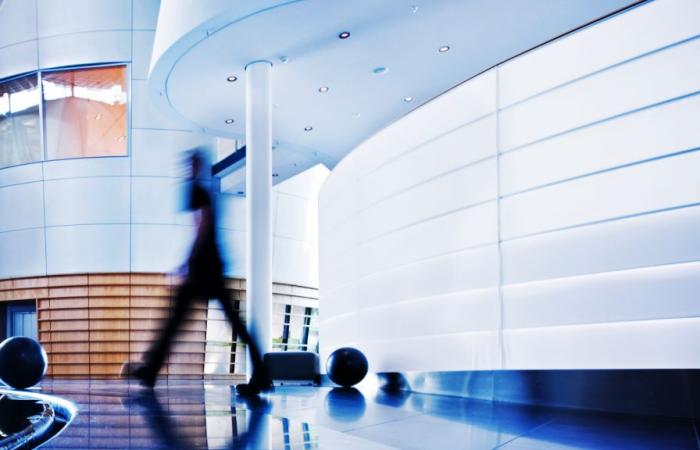Positive opinion on the decree 69/2024 although it is considered necessary to proceed with an organic reform that goes beyond the individual corrective measures, to overcome their partiality and provisionality and to guarantee uniformity at a national level of the parameters and administrative rules.
The Orders have long been expressing their opinion on the need to intervene on some crucial and problematic aspects that the decree only partially resolves. We therefore collect the opinions of some Italian Orders to underline and strengthen the will to proceed all in a single and unequivocal direction, as the work carried out in cooperation in this regard in the last two years has amply demonstrated.
“I am satisfied to note that our National Council is aligning itself with the work already carried out by the Orders which for some time have been exposing, during meetings in their territories, issues such as usability, tolerances, double conformity, professional liability, with the aim of raising awareness among politicians and engaging in dialogue with them.” he begins like this Maria Cristina Milanese, President of the Order of Architects of Turinremembering the Road Map of the meetings held: “From Turin to Crotone, passing through the main provincial capitals of Italy, Milan, Rome, Florence, Siena, Frosinone and Caserta. A journey that lasted almost a year to demonstrate the synergy created among the Presidents of the Italian Orders of Architects.”
“I believe that attention should be paid not only to the corrective proposals of Legislative Decree 69/2024, but it is necessary to promote a reform of the TUE, in order to avoid confusion and make the procedure more effective without leaving room for interpretation.”. The President concludes, agreeing with what was also expressed by Alessandro Panci, President of the Order of Architects of Rome:
“Currently, at the regional level, decisions are made in a fragmented manner, each on their own. If we do not proceed with a comprehensive change, which intervenes at the national level by standardizing all the parameters and administrative rules, we will remain in a situation in which uncertainties and misunderstandings will always be present. It is not a question of establishing individual percentages but of recognized operation at the national or regional level, because it is a problem if the lower level prevents initiatives generally planned at the higher level. The need to introduce the regulation of VEPA or pergotende within a national text highlights an existing regulatory system that does not have the necessary clarity and is fragmented at the regional level. Another example relating to the verification of conformity: the double conformity between building and urban planning aspects has not really been eliminated because in part it remains today, despite the measures provided for by the Salva casa. It is hoped that with the amendments to the text we proceed with corrections that eliminate it completely.” This is how President Panci sums up his observations on the so-called “Save-Home Decree” sent to the commission Room Environment which is examining Legislative Decree 69/2024 for conversion into law.
“An affidavit is a formal and solemn statement made by an individual or entity to attest to the truth, authenticity, or validity of something. This statement is often made with certainty and certainty, based on concrete facts or evidence.” he claims Raffaele Fusco, President of the Order of Architects PPC of Astigiving voice to the unanimous opinion regarding the responsibilities attributed to the professional, who should be able to carry out the profession without fearing that the regulatory opacity exposes him to interpretative risks. “The technician who issues the certification assumes all civil and criminal liability in the event that building problems arise (structural collapse, damage caused to people, etc.). The concept of certification is contained in the Consolidated Law, Presidential Decree 380/2001, regarding free building activity, building permits, DIA and SCIA, accompanying the request for the building permit. Given these premises, Architects are trained and prepared to draft such declarations but the complexity and lack of clarity of the law increasingly exposes Professionals to interpretative risks that are not their responsibility. It is therefore evident that there is a need for a Clear Standard that does not exempt Professionals from drawing up such Certifications, but that allows them to do so with complete peace of mind in the interest of the citizens and the territory in which they operate..”
Cristiano Guernieri, President of the Order of Architects PPC of the Province of Mantuasheds light on a further aspect to be paid attention to regarding the correction of the Consolidated Law currently in force, which risks not highlighting the issues and problems related to the existing building heritage as a new resource, and therefore does not interpret the historical heritage. “We are satisfied with the proposed work”, declares President Guernieri, “but instead of acting on individual problems, aspects or chapters, let’s proceed in an organic manner, providing for an interaction between the Consolidated Building Act and the Constraints, taking into account the technological evolution achieved from 1975 to today. The proposed simplification must be linked to procedures for Free Activity, Building Permits, Scia and the elimination of Double Conformity. Furthermore, the text must also look at the seismic and sustainable structural aspect of the building and must, therefore, look to the future of our building heritage. Above all, the future text must be a BUILDING STANDARD and not an Urban Planning one”.
Clarity and courage: these are the key points that Francesco Livadoti, President of the Order of Architects PPC Crotonehopes that they will be the driving force behind the definition of a law that is as transparent as possible: “A new and further amendment to the old TU 380 of 2001 does not represent the solution and the DL Salva Casa does nothing but increase the enormous uncertainty and confusion already in existence within the Professional firms, but also in the Technical Offices of the Municipalities throughout Italy. It is not only the individual Professionals who affirm it but also Sector Managers and Technical Instructors who find themselves having to disentangle themselves between old and new “simplifications” of a Law now outdated in its original vision. Yet, the magic period of building bonuses had amply demonstrated this aspect, so much so that there was the need to intervene several times to modify art. 3 or art. 9, except to leave unchanged some articles and paragraphs dragged by the usual references, as is done in the majority of regulatory provisions. The effects that the Salva Casa DL is producing risk becoming a real boomerang for professionals, citizens and businesses that instead of regularizing homes could find themselves paying a high price due to interpretations that professionals tend to cling to. Today more than ever there is a need for a clear and courageous Law on construction, that does not hide pitfalls for anyone and that goes in the direction of a true regularization and regeneration of buildings and above all that does not expose anyone to professional and legal risks.”
We are therefore moderately satisfied with the results achieved to date and with the Salva Casa Decree, strengthened by a fruitful collaboration between the Italian Orders, which amply demonstrates the shared will to proceed with an organic reform of the Consolidated Law on Construction.






